Brighter than a thousand suns: 20 terrible shots in memory of the nuclear explosion in Hiroshima
Categories: History
By Pictolic https://pictolic.com/article/brighter-than-a-thousand-suns-20-terrible-shots-in-memory-of-the-nuclear-explosion-in-hiroshima.html6 August 1945 the United States dropped an atomic bomb on the Japanese city of Hiroshima, for the first time in history to use nuclear weapons. Still, the debate continues whether it was a justified action, because then Japan was close to surrender. Anyway, on 6 August 1945 a new era began in the history of mankind.
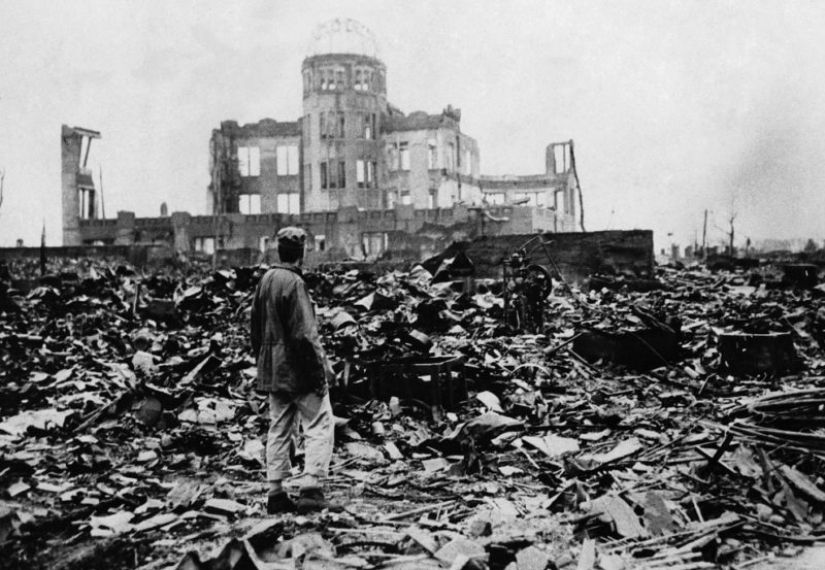
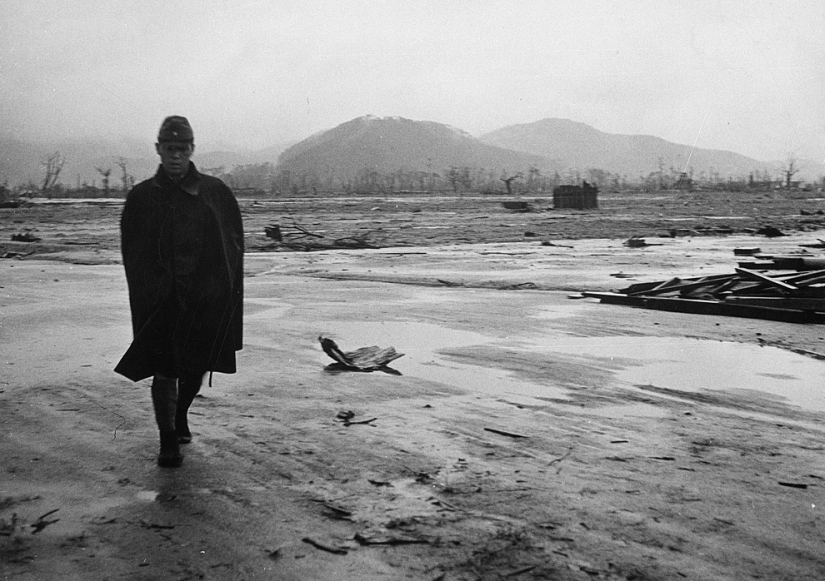
1. Japanese soldier walking through a desert in Hiroshima in September 1945, just a month after the bombing. This series of photographs depicting the suffering and ruins that was presented to the American Navy. (U.S. Department of Navy)
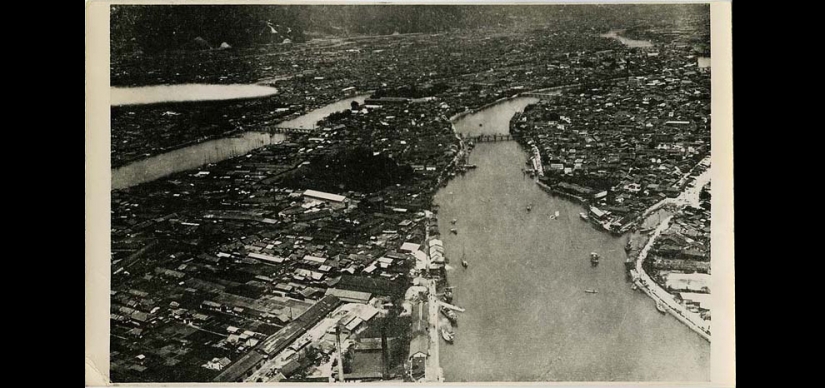
2. View of Hiroshima from the air shortly before the city bomb was dropped in August 1945. Shown here is a densely populated area of the city on the river Motoyasu. (Hiroshima: The United States Strategic Bombing Survey Archive, International Center of Photography, Purchase, with funds provided by the ICP Acquisitions Committee, 2006)
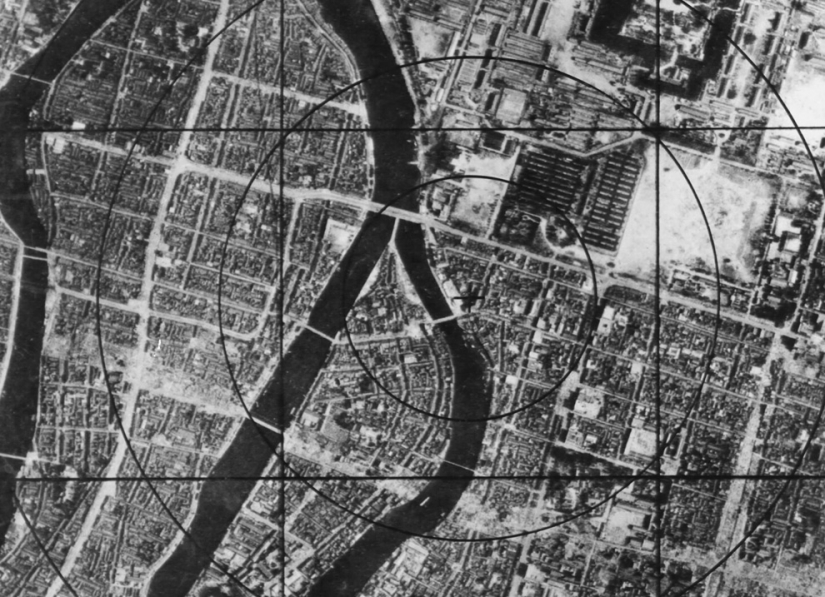
3. The data the air force USA — map of Hiroshima before the bombing where you can watch the epicenter area, which instantly disappeared from the face of the earth. (U.S. National Archives and Records Administration)
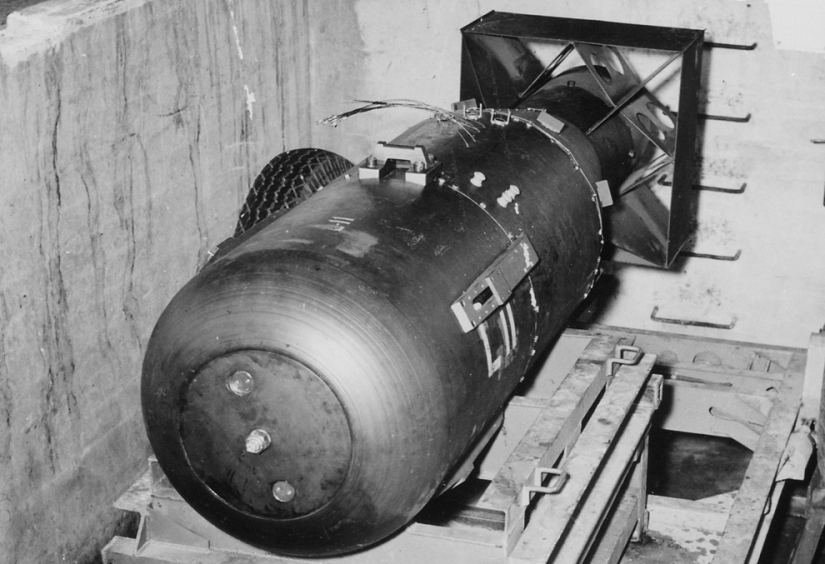
4. The bomb, codenamed "Little" over the gateway of the bomber B-29 Superfortress "Enola Gay" on the basis of the 509th consolidated group on Tinian in the Marianas in 1945. "Baby" was 3 m long and weighed 4,000 kg, but contained only 64 kg of uranium, which is used for triggering the chain of nuclear reactions and subsequent explosion. (U.S. National Archives)

5. Photo taken from one of the two American bombers of the 509th consolidated group, shortly after 8:15, 5 August 1945, shows a rising explosion of smoke over Hiroshima. At the time of shooting there was a flash of light and heat from the fireball with a diameter of 370 m, and the blast wave quickly dissipated, already causing the most harm to buildings and people in a radius of 3.2 km (U.S. National Archives)
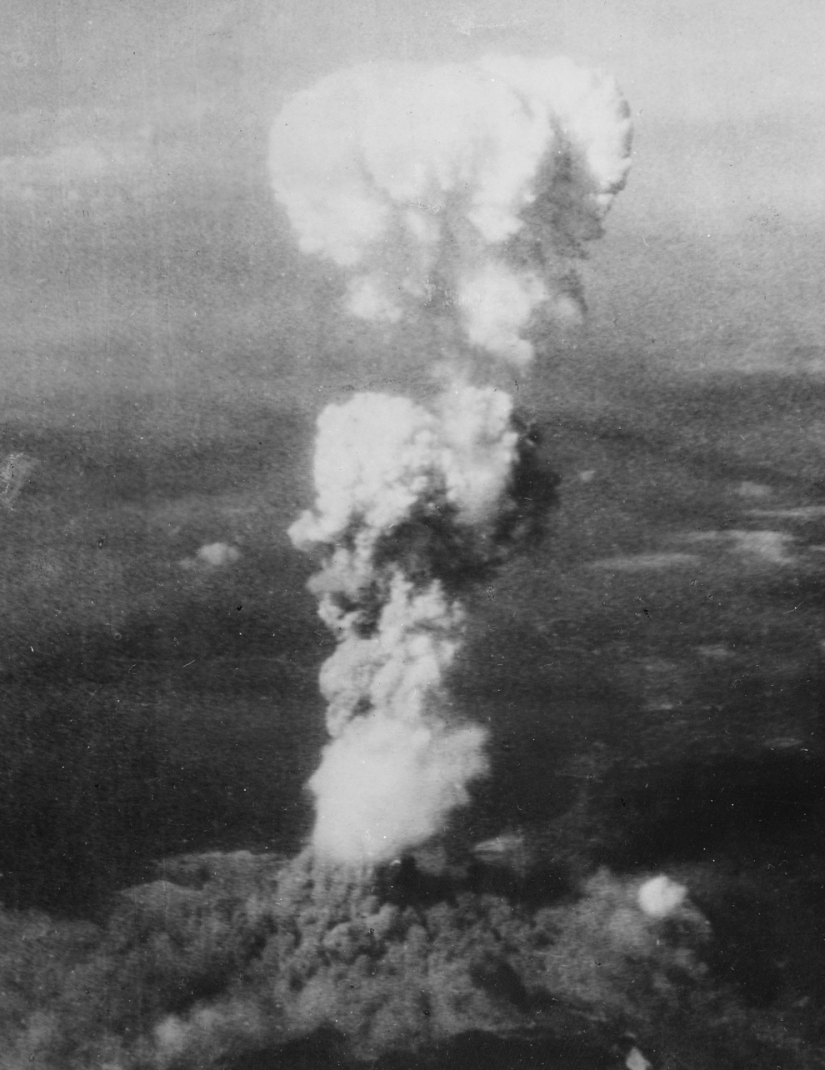
6. A growing nuclear "mushroom cloud" over Hiroshima shortly after 8:15, 5 August 1945. When a portion of the uranium in the bomb passed the stage of cleavage, she was instantly transformed into the energy of 15 kilotons of TNT, heating a massive fireball to a temperature of 3980 degrees Celsius. Superheated air rose quickly in the atmosphere, like a huge bubble rising in a column of smoke. By the time this photo was taken, I was able to climb to a height of 6096 meters above Hiroshima while smoke from the explosion of the first atomic bomb shattered to 3048 m at the base of the column. (U.S. National Archives)
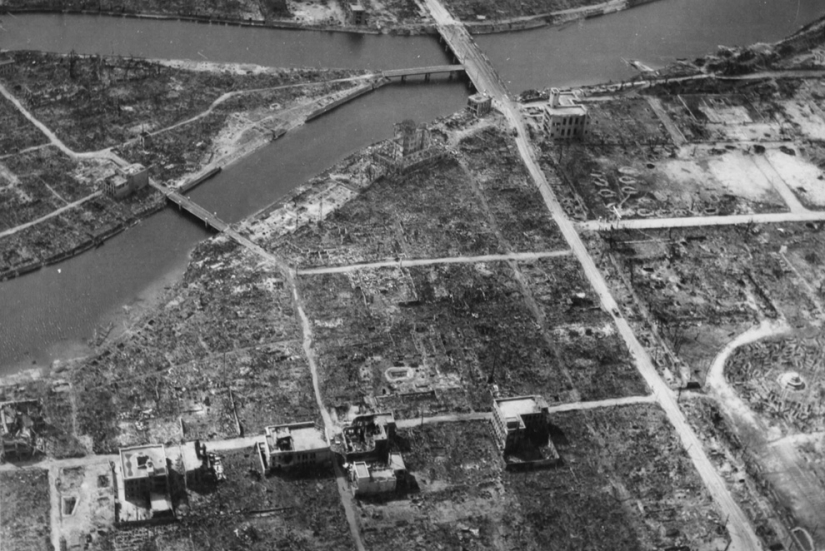
7. View of the epicenter of Hiroshima in autumn of 1945, the complete destruction after the first atomic bomb drop. The photograph shows the hypocenter (center point of the center of explosion) — approximately above the Y-shaped intersection in the center left. (U.S. National Archives)
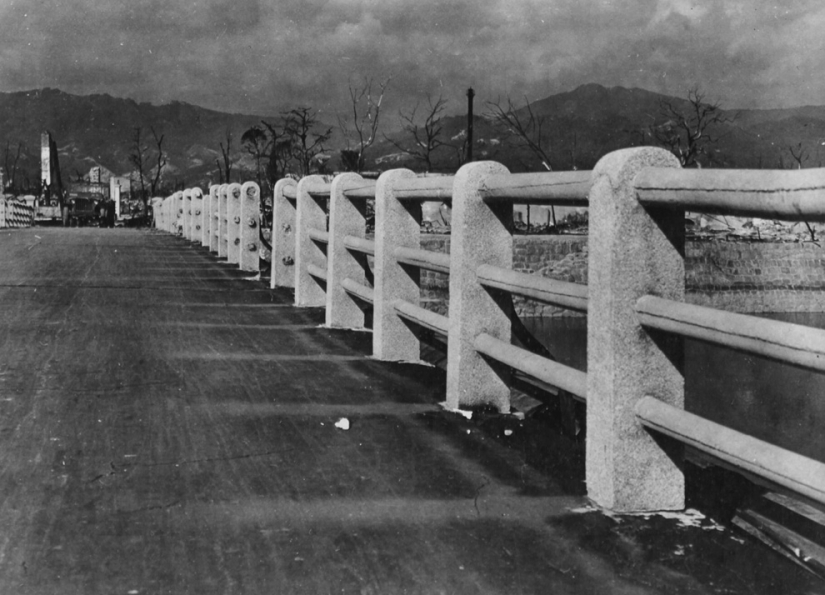
8. Bridge across the OTA river, 880 meters from the hypocenter of the explosion over Hiroshima. Notice how burned down the road, and on the left are Ghost prints where the surface protected concrete columns. (U.S. National Archives)
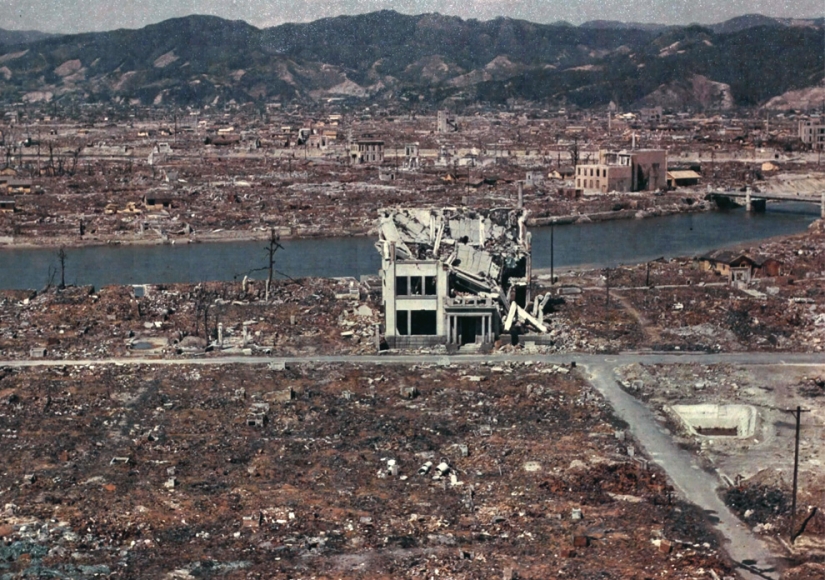
9. Color photograph of the destroyed Hiroshima in March 1946. (U.S. National Archives)
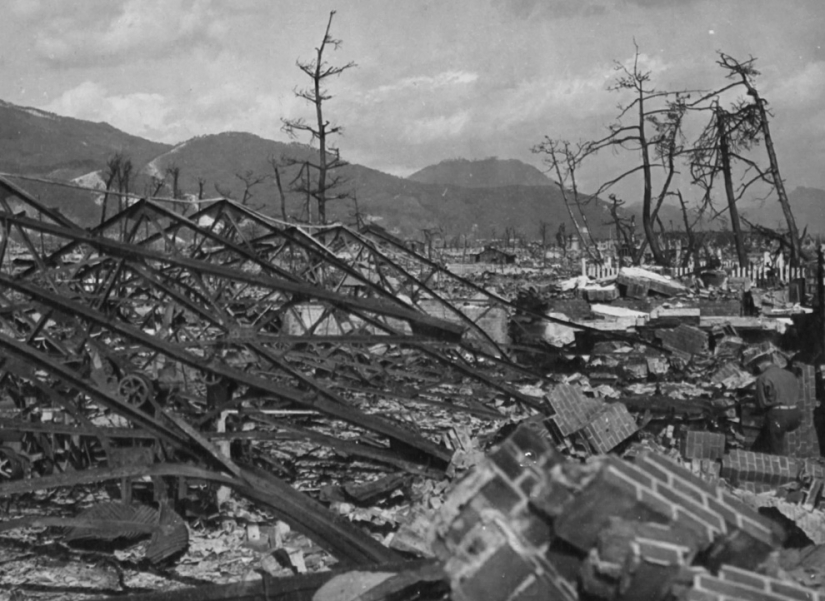
10. The explosion destroyed the plant Okita in Hiroshima, Japan. On 7 November 1945. (U.S. National Archives)
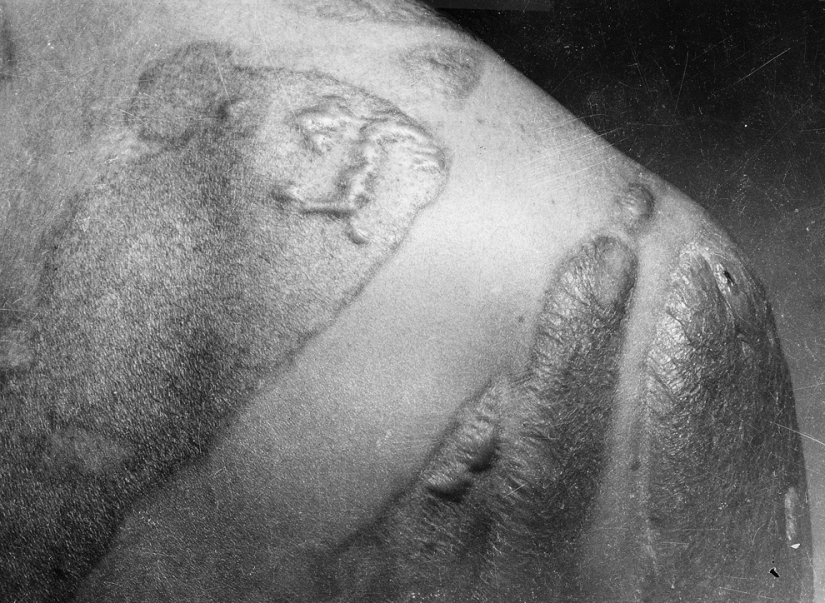
11. Keloid scars on the back and shoulders of the victims of the explosion in Hiroshima. Scars formed where the victim's skin was not protected from direct radiation of rays. (U.S. National Archives)
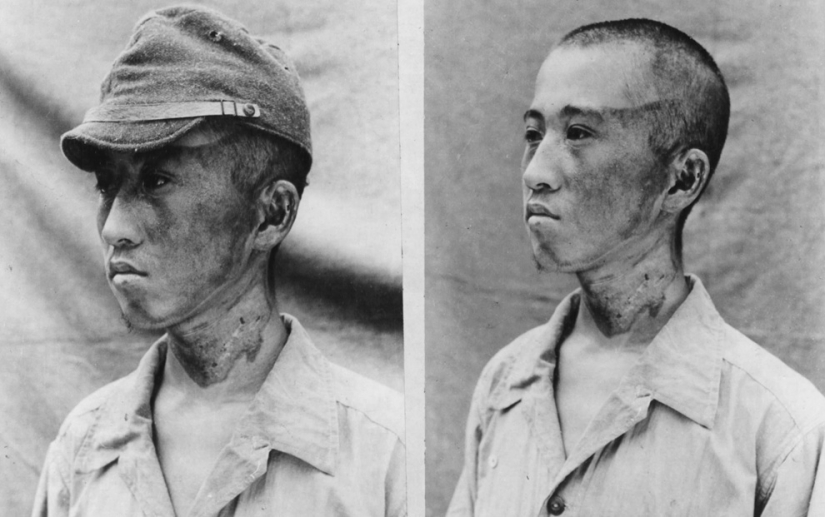
12. This patient (photo taken by the Japanese military on 3 October 1945) was about 1981,2 m from the epicenter, when the radiation rays caught him on the left. Cap protected the head from burns. (U.S. National Archives)
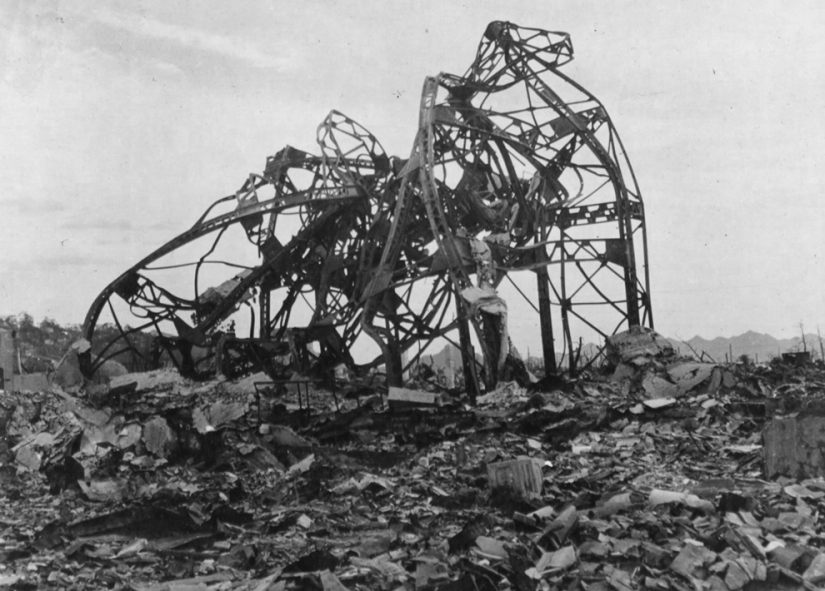
13. Twisted iron beams — all that remains of the theatre building located about 800 meters from the epicenter. (U.S. National Archives)
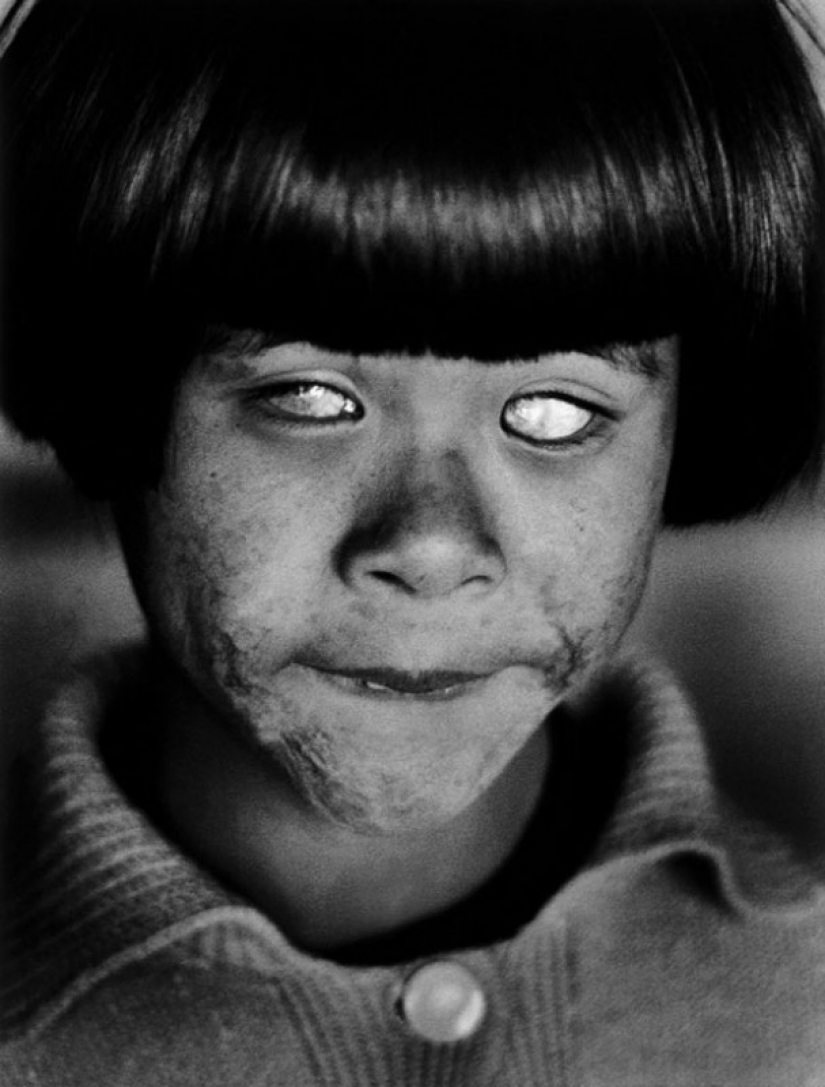
14. Girl blinded after a nuclear explosion.
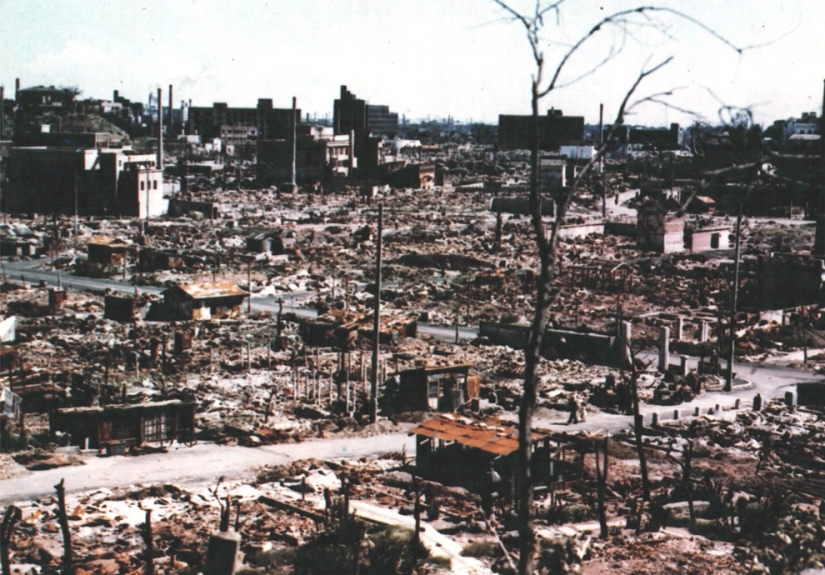
15. A color photograph of the ruins of Central Hiroshima in autumn of 1945. (U.S. National Archives)
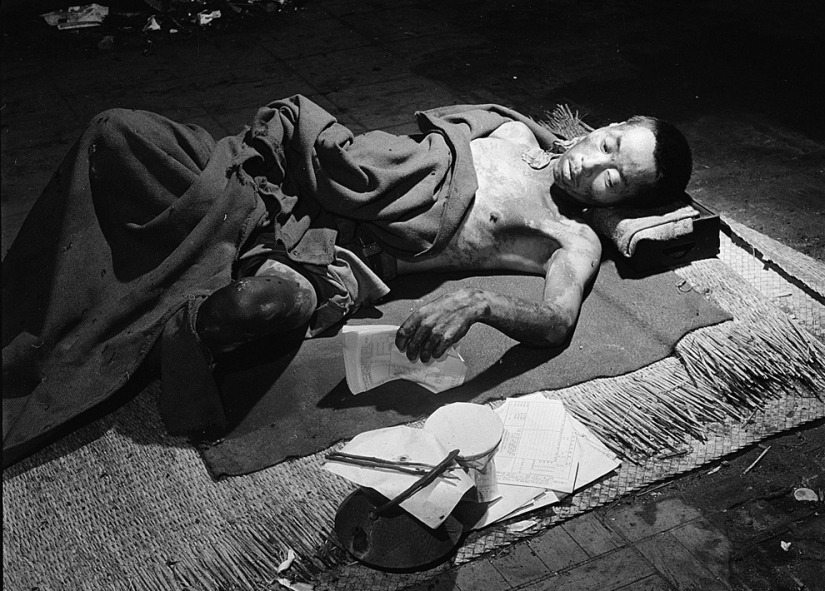
16. The victim of the bombing in Hiroshima lies in a temporary hospital, located in one of the surviving buildings of the Bank in September 1945. (U.S. Department of Navy)
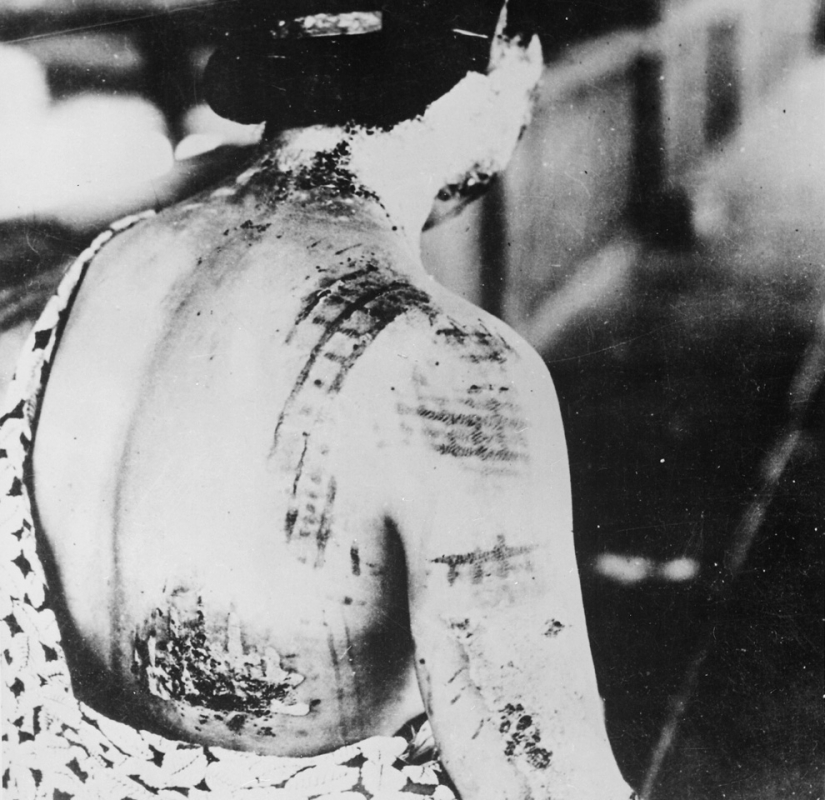
17. From the caption to the photo: "the Burns on the patient's skin is left with dark spots from kimono that was on the victim at the time of the explosion." (U.S. National Archives)
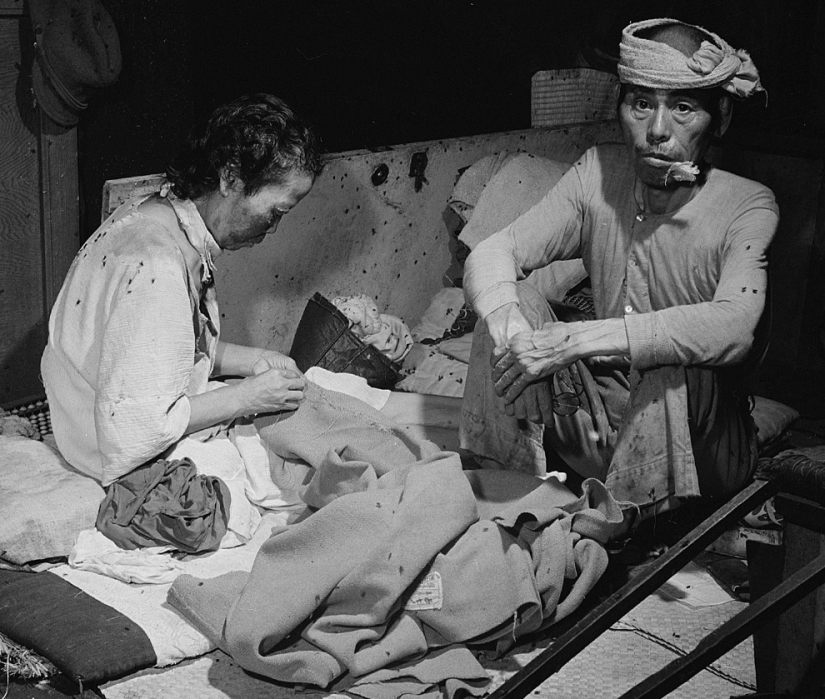
19. Victims of an explosion in swarming flies temporary hospital in a Bank building in Hiroshima on 15 September 1945. (U.S. Department of Navy)
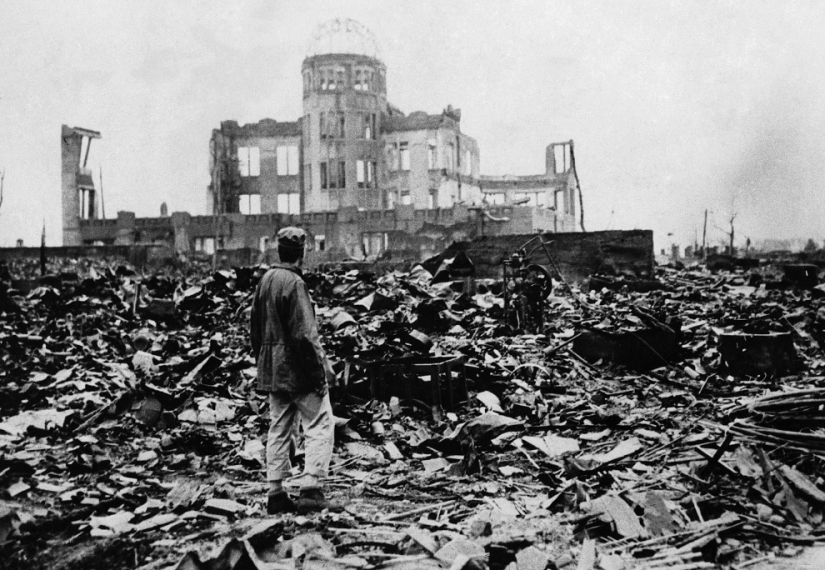
19. The us military is canvassing the area around the epicenter in Hiroshima in autumn of 1945. (U.S. National Archives)

20. Unknown on the ruins of Hiroshima. (AP Photo)
Keywords: The bomb | The Museum | USA | Hiroshima | Nuclear weapons | Japan
Post News ArticleRecent articles

There are many places in the world where only the chosen ones can be. The cities of Mecca and Medina in Saudi Arabia are well known ...

This collection of photos will clearly please the little inner perfectionist who lives in each of us. It doesn't matter how much ...
Related articles

The symbol of the island of Sicily — treskilion, represents three joined legs bent at the knees, with the head of the Gorgon ...
The name of the photographer is not known to everyone, but it is difficult to find a person who is not familiar with his works. ...

Human intervention in the affairs of nature is extremely rarely successful. Especially a lot of trouble was brought to the ...

If you don't feel good about the donut you ate for lunch, relax - it can get worse ... At least you didn't eat the ...